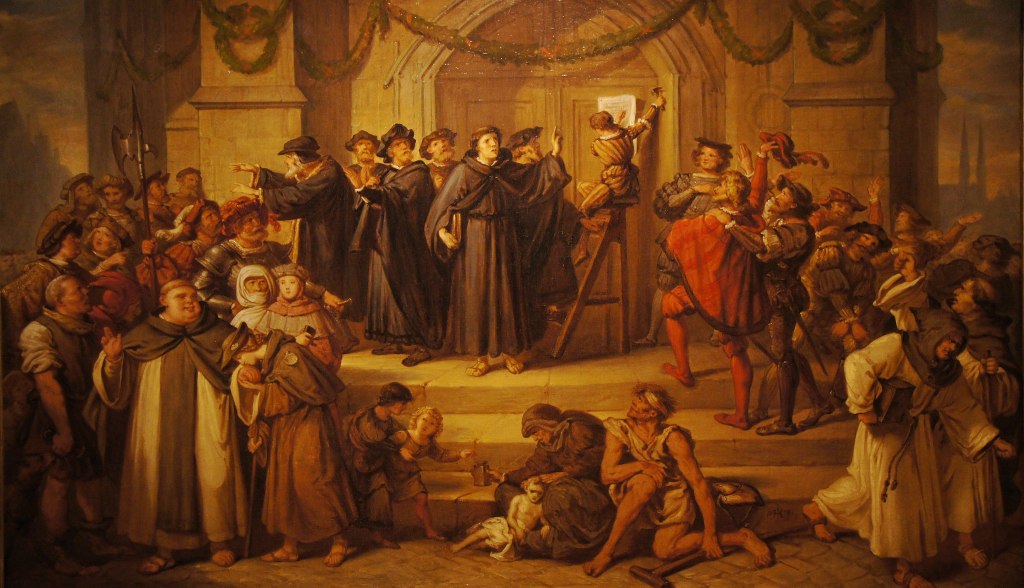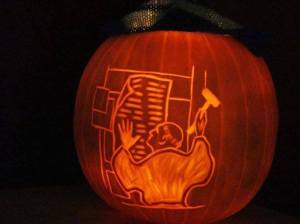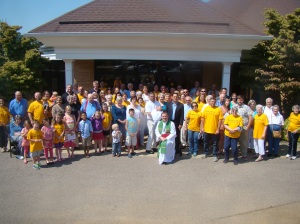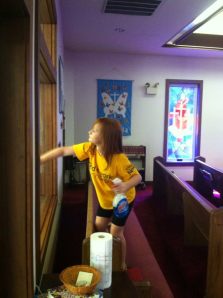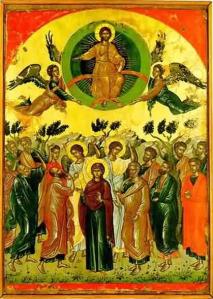Most everyone in the United States recognizes St. Patrick’s Day (March 17) as a day for fun and wearing green. The genesis of our modern celebration comes from the many past Irish immigrants to the United States. We can trace the celebration’s origins back to New York in 1762 when Irish soldiers serving in the British military marched through the city to commemorate the “holy day,” giving rise to one of the most famous parades in the world.[i] Yet at its heart, St. Patrick’s Day is a religious feast day on the liturgical calendar. In Ireland, families traditionally go to church and have festive dinners. Although to be frank, the American style of celebration (too often centered on drinking beer to excess) has begun to impact Ireland over the last decades.
However, St. Patrick’s Day is not the only big day during this coming week. Just two days later (March 19), we mark the religious Feast of St. Joseph. Like the story of St. Patrick’s Day, Italian immigrants maintained and expanded upon traditions from home, as did Czechs, Poles, and many others who are inspired by St. Joseph. In many Italian communities, St. Joseph’s Day is HUGE. Reasons for this affection vary. There are indeed mythic if not superstitious stories of people saved from famine, shipwreck, or other calamity when they asked for St. Joseph’s blessing. Although we Lutherans reject the petitioning saints[ii] for aid since the Reformation, Lutherans still have Joseph on our liturgical calendars on March 19. The Church gives God thanks for Joseph’s loving life and witness of faith, and since at least the 9th Century, Joseph has been honored with the titles of Guardian, Educator, or Adoptive Father of our Lord.
With the feasts close association to the Italian community, how do people traditionally celebrate? Well, some cities offer special worship, festivals, or parades. Italians in New Orleans will have their parade on March 25th this year. Bostonians, near where I grew up, wait until July for their major festival. With St. Joseph’s Day falling on a Sunday in 2023, some will celebrate on the following Monday.
As they celebrate St. Joseph’s Day, people often wear red in the United States. I’ve not been able to determine why. I suspect it might be related to Joseph’s being a patron of workers in Catholicism. Workers movements often wear red, and as a carpenter (or builder) himself[iii], St, Joseph has been historically held up in opposition to Communism. In 1955, an additional feast day was declared by Pope Pius XII and is celebrated on May 1, International Workers’ Day (or May Day), rebranded as the separate Feast of St. Joseph the Worker.[iv]
Yet in light of his role in the Holy Family, people often seek to celebrate “family” as they remember St. Joseph. As they gather, families might create large St. Joseph Tables (or St. Joseph Altars) with three tiers of food, three representing the Trinity. These are sometimes created in a cross shape. People place flowers, limes, wine, fava beans, cakes, breads, cookies, and other meatless dishes (due to the feast day falling during Lent), as well as zeppole, an Italian pastry consisting of a deep-fried dough ball of varying size. Zeppole is often topped with powdered sugar or filled with custard, jelly, cannoli-style pastry cream, or a butter-and-honey mixture. In lieu of zeppole, a treat popular in Naples, Sicilians tend to prefer Sfingi, donuts that are often made from a dough of flour, sugar, eggs, and ricotta and rolled in sugar.
Why so many pastries? There’s an old legend that while exiled in Egypt, Joseph supported his family by selling…pancakes! (This was not necessarily our modern dish but suggests a Middle Eastern bread-like meal like pancakes.) Indeed, March 19th serves as Father’s Day in Italy. Originating in Tuscany and Umbria, Frittelle di San Giuseppe, a fried rice “pancake” (more like a small American doughnut), is now often served throughout the nation. If you are afraid to make such traditional Italian pastries and treats yourself, they are usually available on St. Joseph’s Day at local Italian deli-bakeries. Just ask. If that’s not for you, why not just have a pancake supper with your family?
Embodying sacred stories in celebration help create wonderful memories, but they also can plant seeds of faith. Thus, many Italians prepare special Lenten dishes that include breadcrumbs. The crumbs are meant to remind us of the Joseph’s vocation as a carpenter. You can also find artisan breads of varied shapes: a Latin cross (to remember Christ’s sacrifice), a baby (to honor Joseph’s role in the Holy Family), St. Joseph’s staff (legend has it that St. Joseph’s staff blossomed into a lily, a symbol both of life and death), a purse (a reminder to give alms), a sheaf of wheat (reminding us of John 12:24-26 but turned upside down serves as St. Joseph’s Beard), and many more.[v]
Due to the Joseph-related stories involving famine in Sicily, food proves a large part of the festival. Yet it isn’t a day for self-indulgence, hospitality is the goal along with providing food to any hungry neighbors. Making donations to help meet the needs of others is a common, important family or congregational activity. You might run across congregations inviting you to come help fill “St. Joseph Bags” for the hungry. People might give extra alms. So, perhaps you might like to make a special donation to a food bank, pantry, or other service organization this year? Donating to enCircle (formally Lutheran Family Services of Virginia) might be a worthy charity as they do so much work supporting families and foster care children.
Whatever you do to celebrate St. Patrick’s Day, St. Joseph’s Day, or any holiday, I encourage you to seek activities that nurture relationship, teach and affirm our faith, and serve our neighbor. If you have some fun as well, that’s ok too.
For those who want to an authentic dish, you can find a recipe for one version of Pasta di San Giuseppe (Pasta of St. Joseph) that I used last year here: https://orderisda.org/culture/our-recipes/authentic-st-josephs-day-pasta/

[i] O’Brian, S. (March 7, 2023). How did St. Patrick die. Irish Central. Downloaded on March 8 at https://www.irishcentral.com/roots/history/how-did-saint-patrick-die.
[ii] Lutherans do have feast days to remember the life and Christian witness of remarkable people, but they serve as models for us, “that we may follow their faith and good works, according to our calling.” We do not “pray to saints” (ask for their intercession), as “we have an Advocate with the Father” (1 John 2:1). Learn more by reading Article XXI, Of the Worship of the Saints, in the Augsburg Confession: https://bookofconcord.org/augsburg-confession/of-worship-of-saints/ You might also like to read Article II, Of the Mass, in the Smalcald Articles: https://bookofconcord.org/smalcald-articles/ii/of-the-mass/
[iii] Although commonly called a carpenter, it might not be that simple. “The word the Gospels use is téktōn, a common term used for artisans, craftsmen, and woodworkers (so, yes, it can translate as “carpenter”), but also, interestingly, it can refer to stonemasons, builders, construction workers, or even to those who excel in their trade and are able to teach others (as in the Italian maestro).” See Esparaza, D. (February 8, 2019). Aletia. Were Jesus and Joseph Really Carpenters as downloaded on March 14, 2023 from https://aleteia.org/2019/02/08/were-jesus-and-joseph-really-carpenters/
[iv] See https://www.sju.edu/news/10-facts-about-st-joseph-honor-his-feast-day
[v] Roman Catholic Diocese of Charlotte (2020). St. Joseph’s Table: An Italian tradition as downloaded at https://yearofstjoseph.org/devotions/st-joseph-table/
Unless otherwise indicated, all scripture quotations for this post are from the New Revised Standard Version (NRSV) translation.
Originally published in the March 14, 2023 weekly newsletter, the Hub, of Christ Lutheran Church, Fredericksburg, VA, it was expanded upon for this post.
© 2023 The Rev. Louis Florio. All content not held under another’s copyright may not be used without permission of the author.




